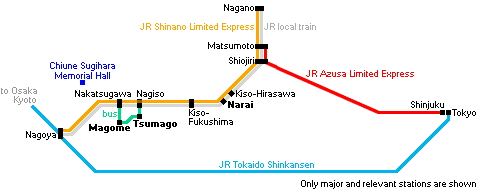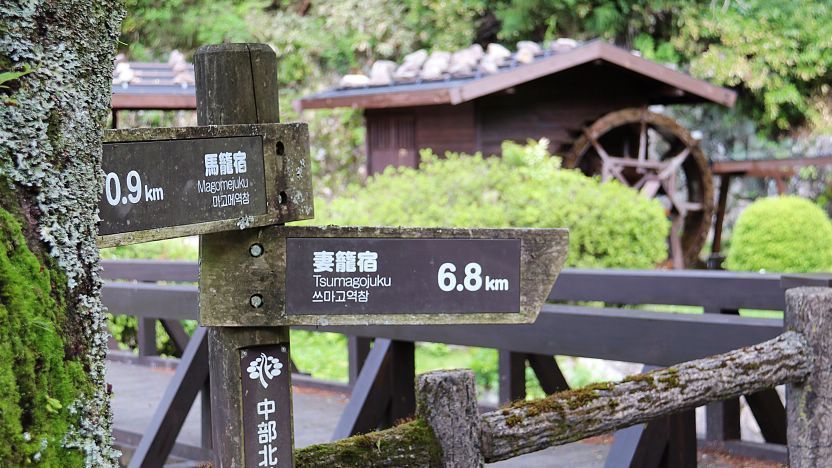- 3.5 h
- ¥13,000
Take the JR Tokaido Shinkansen from Tokyo to Nagoya (100-110 minutes) and transfer to the JR Shinano limited express train for access into the Kiso Valley. The Japan Rail Pass covers the entire train journey if using Hikari trains along the Tokaido Shinkansen, but a supplement fee is required on Nozomi trains.
To access Magome, take the Shinano limited express from Nagoya to Nakatsugawa Station (50 minutes). The entire journey from Tokyo to Nakatsugawa takes about three hours and costs around 13,000 yen one way. From Nakatsugawa, Magome can be reached in a 30 minute bus ride (570 yen one way, not covered by the Japan Rail Pass, see timetable).
To access Tsumago, get off at Nagiso Station. Some limited express trains stop at Nagiso Station, but most do not, in which case you should transfer to a local train at Nakatsugawa Station. The entire journey from Tokyo to Nagiso takes about three hours and costs around 13,000 yen one way. From Nagiso, Tsumago can be reached in a short taxi (about 2000 yen one way) or bus ride (300 yen one way, not covered by the Japan Rail Pass, see timetable).
To directly access Narai from Tokyo, it is recommended to travel by limited express train via Shiojiri (see below).

